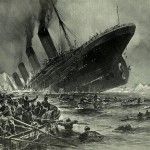Telemach Makes Black Holes dangerous– No Suitor ready to Disarm Him as of Yet
The T is uncontroversial: no one questions that clock rate T is reduced more downstairs in the way described by Einstein in 1907 – his “happiest thought” as he always said. But if the clocks are indeed ontologically slower-ticking down there (as the gravitational twin clocks experiment implicit in the G.P.S. proves to the eye every day), then other physical quantities valid down there, besides clock rate T, are automatically affected by the same Einstein factor: Length L, mass M and charge Ch. This is the T-L-M-Ch theorem.
Metrologists are responsible for the famous Ur-meter, the famous Ur-kilogram (quite expensive) and the well-known unit Ur-charge of electrons. The whole profession is keeping a low profile at present for being unable to defend the three dethroned constants against the onslaught of the Telemach revolution. The Ur-kilogram is ready to be auctioned at Sotheby’s. All distances in the universe have acquired new values while several new constants of nature have arisen and Einstein’s constant “c” has become a global constant. The field has greatly won in clarity.
It would be too nice if more colleagues cared to contribute to the obtained more consistent picture of general relativity – independently described with a wealth of new formulae by Richard J. Cook (see his paper “Gravitational space dilation”). The implied connection to the properties of black holes makes the new results even more exciting. I pledge that doctoral students be allowed to work in newly promising branch of physics.
Imagine: a Whole Planet Betting its own Survival on your being Wrong
What I showed is that Einstein’s happiest thought – that clocks on a lower floor tick more slowly – possesses 3 corollaries (impossible to spot in 1907): size and mass and charge are affected by the same factor (the former going up, the latter two going down). No colleague on the planet objects to “Telemach,” as the result involving T, L, M, Ch is called.
But the planet accepts like sheep that the LHC experiment continues: This even though the most hoped-for products – artificial black holes – have become more probable; undetectable to its sensors; and last-not-least are going to shrink the earth to 2 cm in perhaps 5 years.
No one believes any more in big progress being possible through meticulous thought today. But: must really every child’s life be bet on this current complacency?
Dear Cologne Administrative Court: thank you for having endorsed the necessity of the “safety conference” in your final statement made unto CERN on January 27, 2011.
I Am mildly Disappointed that None of the Young Scientists Tries to Get…
… a piece of the cake by elaborating on Telemach. I say so not because the Telemach theorem is a major new result affecting the planetary safety of the famous LHC-experiment at CERN, Switzerland, but because he or she thereby re-opens the door to fame to the “planetary” young generation like the members of Neil Turok’s genius school in South Africa. (Telemach was published in Africa.)
By the way: Dismantling Telemach is no less rewarding a task – it is actually the outcome I would personally prefer in view of the danger that its correctness brings with it. But to either end, one first has to understand it, which apparently none of the more senior physicists and mathematicians of the planet has so far achieved. The explanation for this in my eyes lies in the intimidating simplicity of Telemach. (I am by the way not alone in having found the theorem: Richard J. Cook of Colorado Springs was earlier with T,L,M but kindly acknowledges Ch.) Now it is your turn.





